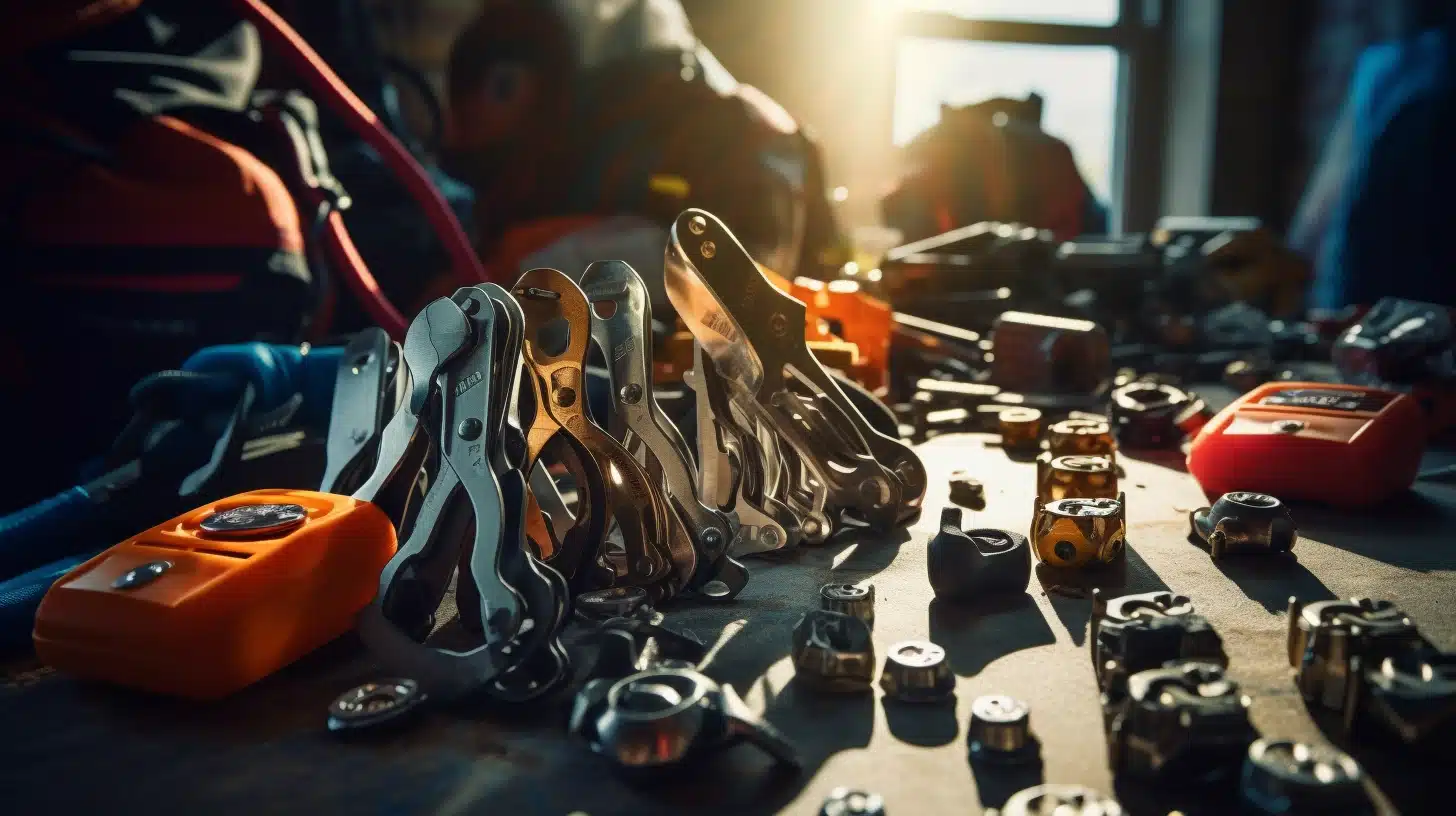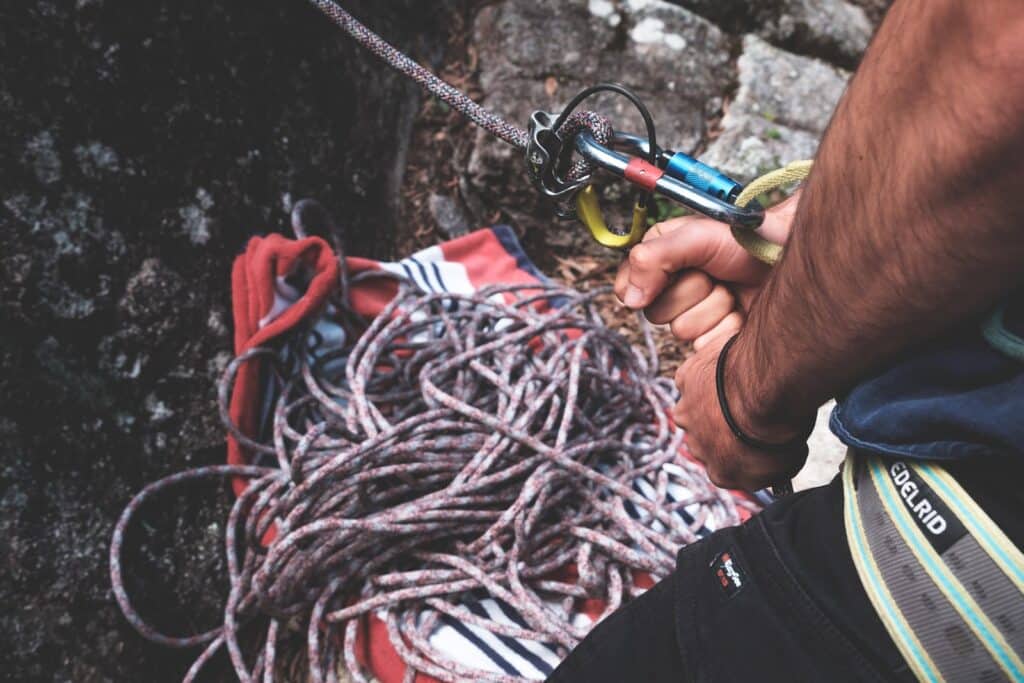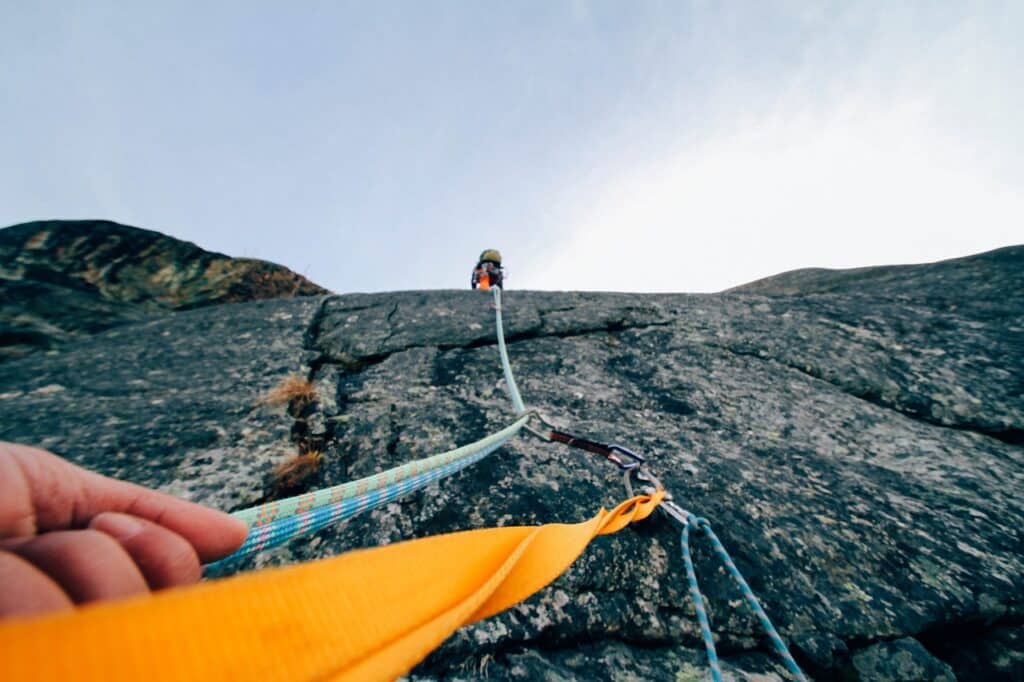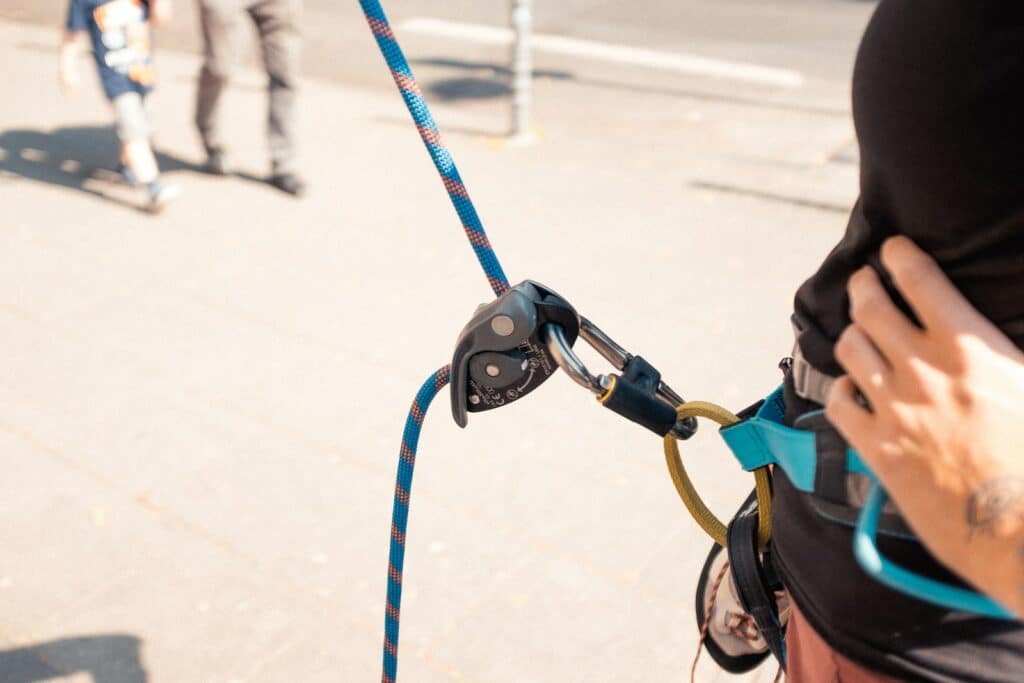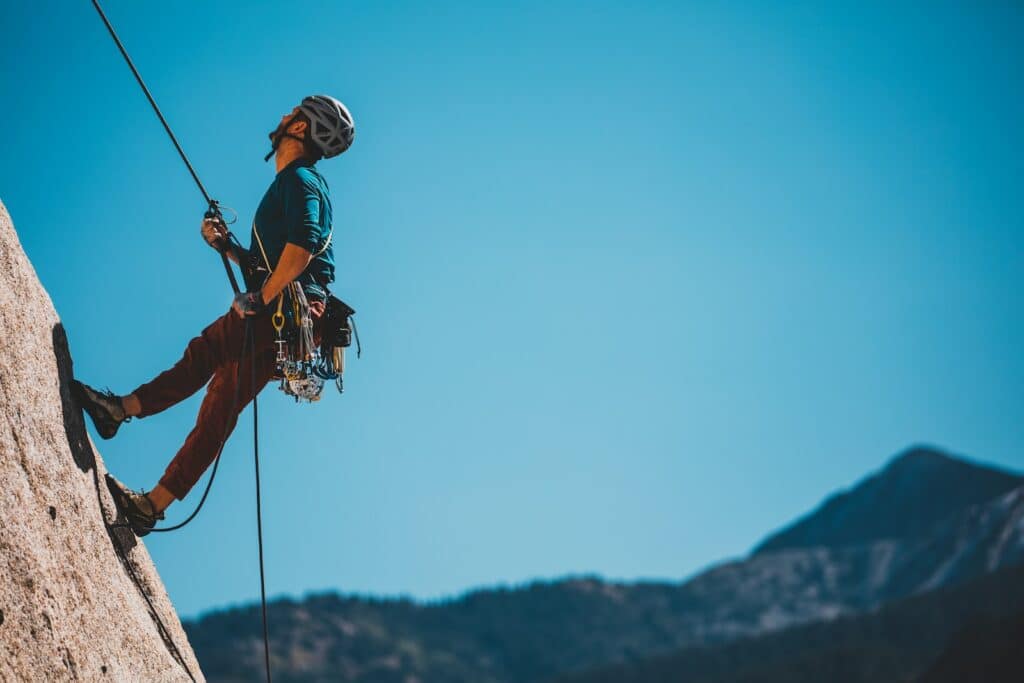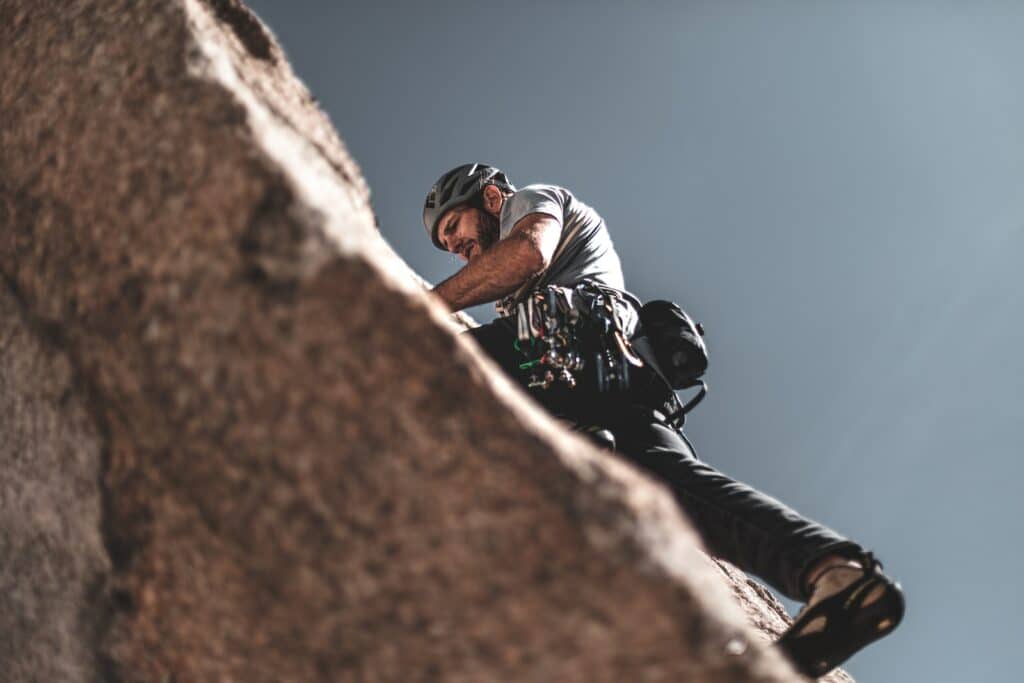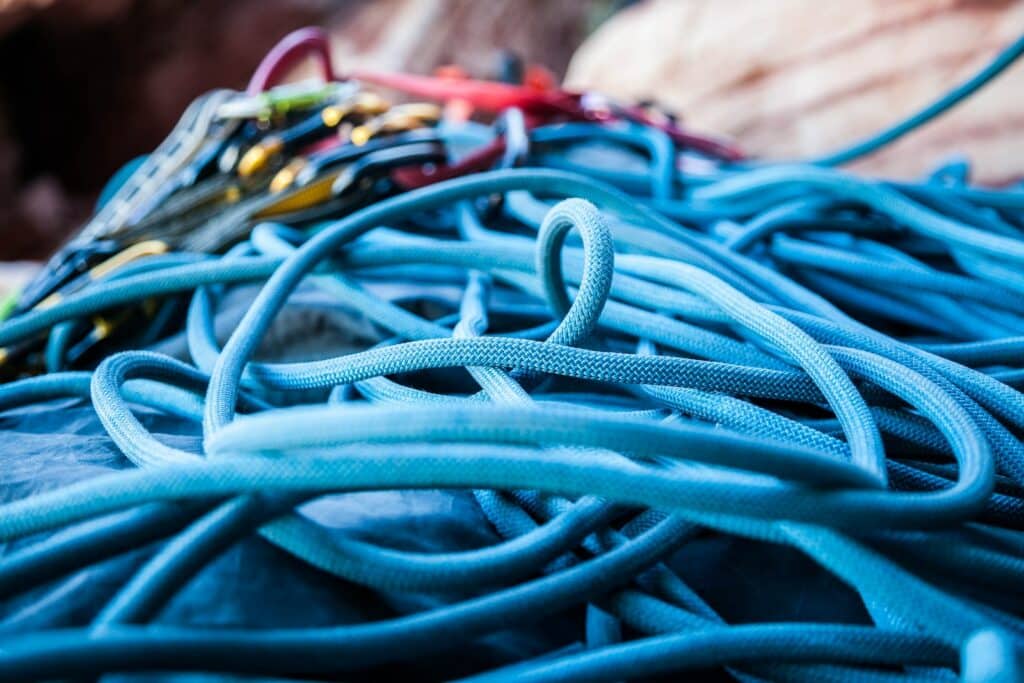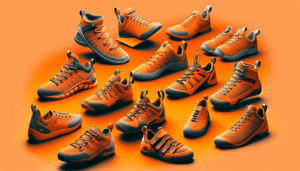Table of Contents
ToggleIntroduction to Trad Climbing Belay Devices
What is Trad Climbing?
Trad climbing, short for traditional climbing, is a style of rock climbing that involves placing protective gear, such as cams and nuts, into natural features of the rock to protect against falls. Unlike sport climbing, where fixed bolts are already in place, trad climbers carry their own gear and create their own protection as they ascend the route. Trad climbing offers a sense of adventure and self-reliance, allowing climbers to explore new routes and tackle a variety of terrain.
Trad climbing allows for greater freedom and flexibility in choosing routes, as climbers are not limited by the presence or absence of fixed bolts. It requires a diverse skill set, including the ability to assess and place gear, build anchors, and make route-finding decisions. Trad climbers often appreciate the mental and physical challenges, as well as the opportunity to connect with the natural environment.
Why Choose Trad Climbing?
There are several reasons why climbers choose trad climbing over other styles:
- Freedom and Exploration: Trad climbing provides the freedom to explore new routes and climb in areas where fixed bolts are not permitted or desired. It allows climbers to engage with the natural features of the rock and find their own path.
- Problem-Solving and Skill Development: Trad climbing requires problem-solving skills and the ability to assess the rock for suitable gear placements. It challenges climbers to develop their technical skills, including gear placement, anchor building, and route-finding.
- Connection with Nature: Trad climbing often takes place in natural, scenic environments. It offers an opportunity to immerse oneself in nature, appreciate the beauty of the surroundings, and experience a sense of adventure.
- Trad Climbing Community: Trad climbers often value the sense of camaraderie and community within the trad climbing world. Sharing knowledge, learning from others, and embarking on climbing adventures together create a strong bond among trad climbers.
While trad climbing can be physically demanding and requires a higher level of technical expertise compared to other climbing styles, the rewards are plentiful for those who embrace the challenge. It offers a unique experience that combines physicality, mental agility, and a deep appreciation for the natural world.
To fully engage in trad climbing, it is important to have the right gear, including proper belay devices for trad climbing, ropes, and protection gear. Understanding the various types of gear and their functions is essential for a safe and enjoyable trad climbing experience.
Essential Gear for Trad Climbing
When it comes to trad climbing, having the right gear is essential for a safe and enjoyable climbing experience. Trad climbing involves placing your own protection as you ascend, relying on gear such as belay devices, ropes, and protection devices. Let’s take a closer look at each of these essential gear items.
Belay Devices for Trad Climbing
Trad climbing belay devices are manually operated devices that allow for control of the rope during belaying. They require the belayer to apply friction to the rope to catch a falling climber (Headrush Tech). Some popular traditional climbing belay devices include the ATC (Air Traffic Controller) and the Figure 8 (Headrush Tech).
These devices are versatile and suitable for a wide range of climbing styles, including multi-pitch, lead climbing, and top-roping (Headrush Tech). It’s important to note that traditional climbing belay devices require proper technique and training to ensure safe and effective use. It is crucial to learn the proper hand positions and braking techniques for each device.
When using a traditional climbing belay device, it is recommended to wear gloves to protect your hands from rope burn and maintain a secure grip on the device (Headrush Tech).
Ropes for Trad Climbing
Ropes are a vital component of trad climbing gear. Dynamic climbing ropes are used to protect climbers in the event of a fall, providing a cushioned catch. These ropes are designed to stretch and absorb the energy generated during a fall, reducing the impact on the climber.
When selecting ropes for trad climbing, it’s important to consider the length and diameter that best suits your climbing needs. Longer ropes are often preferred for multi-pitch climbs, allowing for greater flexibility in finding suitable anchor points. The diameter of the rope affects its weight, durability, and handling characteristics. Thinner ropes are lighter and more suitable for advanced climbers, while thicker ropes offer increased durability and ease of handling.
Always ensure that your climbing rope is in good condition, regularly inspecting it for any signs of wear or damage. It’s also important to store your ropes properly to maintain their integrity and longevity.
Protection Gear for Trad Climbing
Trad climbing involves placing protection devices such as cams, nuts, and hexes into cracks and other features of the rock to create anchor points and protect against falls. These protection devices are essential for maintaining the safety of the climber.
Cams, also known as camming devices, are spring-loaded devices that expand and grip the rock when placed in a crack. Nuts, or passive protection, are small metal wedges that can be wedged into constrictions in the rock. Hexes, or hexagonal-shaped protection, can be placed in larger cracks and offer versatile protection options.
When selecting protection gear for trad climbing, it’s important to consider the type of rock you’ll be climbing on and the size range of cracks you’ll encounter. It’s recommended to carry a variety of sizes to accommodate different crack widths.
Proper training and practice are essential for effectively placing and assessing the security of protection devices. Learning from experienced climbers or taking trad climbing courses can provide valuable guidance in using protection gear safely and effectively.
By ensuring you have the right belay device, ropes, and protection gear, you’ll be well-equipped for your trad climbing adventures. Remember to always prioritize safety, practice proper techniques, and stay knowledgeable about the latest advancements in gear technology.
Types of Belay Devices for Trad Climbing
When it comes to trad climbing, choosing the right belay device is essential for a safe and enjoyable climbing experience. Trad climbers rely on belay devices to control the rope during belaying, providing the necessary friction to catch a falling climber. There are three main types of belay devices commonly used in trad climbing: manual belay devices, assisted-braking belay devices, and hybrid belay devices.
Manual Belay Devices
Manual belay devices are the traditional choice for trad climbers. These devices require the belayer to manually control the rope tension and apply friction to catch a falling climber. They typically feature a simple design that allows for easy rope feeding and smooth rope handling. Popular manual belay devices used in trad climbing include the ATC (Air Traffic Controller) and the Figure 8 (Headrush Tech).
Manual belay devices are versatile and suitable for a wide range of climbing styles, including multi-pitch, lead climbing, and top-roping. They provide the belayer with a high level of control and allow for quick and efficient rope management. However, proper technique and training are essential when using manual belay devices to ensure safe and effective belaying.
Assisted-Braking Belay Devices
Assisted-braking belay devices have gained popularity among trad climbers due to their added safety features. These devices utilize a specialized mechanism that automatically applies friction to the rope when a load is applied, helping to catch a falling climber. The assisted-braking feature reduces the risk of the rope slipping through the belay device, providing an additional layer of security.
Popular assisted-braking belay devices used in trad climbing include the Petzl GriGri. These devices are designed to handle single ropes and are particularly useful for lead climbing scenarios. They require less effort from the belayer compared to manual belay devices, as the assisted braking mechanism assists in catching falls. However, it is important to note that proper technique and understanding of the device’s operation are still crucial for safe belaying.
Hybrid Belay Devices
Hybrid belay devices combine the features of both manual and assisted-braking belay devices. These devices provide the versatility and control of a manual belay device when belaying a leader, and the added safety of an assisted-braking mechanism when belaying a follower. Hybrid belay devices are designed to accommodate both lead and top-rope climbing scenarios, making them a popular choice for trad climbers seeking flexibility in their climbing adventures.
When choosing a belay device for trad climbing, it is important to consider factors such as the type of climbing you will be doing, your experience level, and personal preferences. Each type of belay device has its advantages and considerations. It is essential to familiarize yourself with the specific features and usage guidelines of the belay device you choose to ensure safe and effective belaying.
Proper technique, training, and the use of gloves to protect your hands from rope burn are important regardless of the type of belay device you use. Always follow manufacturer guidelines and seek proper instruction to ensure you are using your chosen belay device correctly and safely.
Now that we have explored the types of belay devices available for trad climbing, let’s delve into some popular options in the next section.
Popular Belay Devices for Trad Climbing
When it comes to trad climbing, having a reliable and efficient belay device is essential for both the climber and the belayer. Here are some popular belay devices that are well-suited for trad climbing:
Black Diamond ATC-XP
The Black Diamond ATC-XP is a versatile and reliable belay device that performs well for both trad climbing and sport climbing. It features multiple friction modes that allow for smooth rope control and easy belaying. The XP model also has grooves on the sides, which add extra friction for improved braking power. The lightweight and compact design make it a favorite among climbers. For a detailed review, visit Outdoor Gear Lab.
Petzl GriGri
The Petzl GriGri is a popular and widely used assisted-braking belay device that is commonly used for sport climbing, but can also be used for trad climbing. It features a camming mechanism that automatically brakes the rope in the event of a fall, providing an added level of safety and ease of use. The GriGri is known for its smooth handling and reliable performance. To learn more about this belay device, check out Outdoor Gear Lab.
DMM Pivot
The DMM Pivot is a unique and innovative belay device that offers smooth rope control and is especially well-suited for trad climbing. It features a pivoting handle that allows the belayer to easily switch between assisted-braking and traditional belaying modes. The Pivot provides excellent control and versatility, making it a popular choice among trad climbers. For a comprehensive evaluation of this belay device, refer to Outdoor Gear Lab.
Edelrid Mega Jul
The Edelrid Mega Jul offers versatile functionality, allowing for both assisted-braking and manual belaying, making it a good choice for trad climbing. It features a unique geometry that provides smooth rope handling and controlled descents. The Mega Jul is known for its reliability and ease of use, making it a favorite among climbers. To learn more about this belay device, visit Outdoor Gear Lab.
Mammut Smart 2.0
The Mammut Smart 2.0 is an intuitive and easy-to-use belay device that is suitable for both sport climbing and trad climbing. It features a self-locking mechanism that automatically locks the rope in the event of a fall, providing an added level of safety. The Smart 2.0 offers smooth handling and controlled descents, making it a popular choice among climbers of all levels. For more information about this belay device, refer to Outdoor Gear Lab.
These belay devices are just a few examples of the many options available for trad climbing. When choosing a belay device, it’s important to consider factors such as the type of climbing you’ll be doing, your personal preferences, and your level of experience. Remember to always familiarize yourself with the proper usage and safety guidelines for each specific belay device. Happy climbing!
Choosing the Right Belay Device for Trad Climbing
When it comes to trad climbing, selecting the right belay device is essential for safety and efficiency. With a wide range of options available, it’s important to consider several factors before making a decision. Here are some key considerations and factors to evaluate when choosing a belay device for trad climbing.
Considerations for Belay Device Selection
- Climbing Style: Consider your preferred climbing style and the type of routes you typically tackle. Are you more inclined towards single-pitch climbs or do you enjoy multi-pitch adventures? Different belay devices have varying features and functionalities that cater to specific climbing styles. For example, if you frequently engage in multi-pitch climbs, you may want to prioritize lightweight and compact options that allow for easy carry on long routes (source).
- Assisted-Braking vs. Manual: Decide whether you prefer an assisted-braking belay device or a manual belay device. Assisted-braking devices, like the Petzl GriGri, provide an extra level of safety by automatically catching the rope in the event of a fall. Manual belay devices, such as the Black Diamond ATC-XP, require the belayer to manually control the rope during belaying. Each type has its pros and cons, so consider your experience level, comfort with different belay techniques, and personal preferences when making this decision.
- Compatibility with Rope Diameter: Ensure that the belay device you choose is compatible with the diameter of the climbing rope you plan to use. Most belay devices can accommodate a range of rope diameters, but it’s important to check the manufacturer’s specifications to ensure a proper fit. Using the wrong rope diameter with a belay device can compromise safety and performance.
Factors to Evaluate in a Belay Device
- Rope Handling: Evaluate how the belay device handles the rope. Look for smooth and controlled rope feeding, easy lock-off capabilities, and efficient rope release. A belay device should provide a balance between ease of use and reliability in various situations.
- Versatility: Consider the versatility of the belay device. Can it accommodate different rope diameters? Does it offer multiple belay modes for various climbing techniques? Versatile belay devices, like the Edelrid Mega Jul, can adapt to different scenarios and climbing styles, making them a valuable addition to your gear.
- Durability and Reliability: Look for belay devices that are built to withstand the demands of trad climbing. Durability is crucial, especially when climbing in rugged and abrasive environments. Read reviews, consider the reputation of the manufacturer, and seek recommendations from experienced climbers to ensure the reliability of the belay device you choose.
- Safety Features: Consider any additional safety features offered by the belay device. Some devices, like the Petzl GriGri+, have anti-panic handles and anti-error catches to prevent dangerous mistakes during belaying. While these features can add an extra layer of safety, it’s important to familiarize yourself with their proper usage to maximize their effectiveness.
By carefully considering these factors, you can select a belay device that suits your climbing style, provides the necessary safety features, and enhances your overall trad climbing experience. Remember to always follow proper belay device usage and safety practices and regularly maintain and inspect your belay device to ensure its optimal performance.
Proper Usage and Safety Tips for Belay Devices in Trad Climbing
When it comes to using belay devices in trad climbing, proper usage and safety are of utmost importance. Here are some essential tips to ensure you use your belay device correctly and maintain a safe climbing experience.
Learning to Use a Belay Device Correctly
Learning the correct technique for using a belay device is crucial for both the climber and the belayer. Each belay device may have specific instructions and hand positions, so it’s essential to familiarize yourself with the user manual provided by the manufacturer. Here are some general guidelines:
- Proper Hand Positioning: Maintain a firm grip on the rope with both hands. The brake hand should be positioned firmly on the rope below the belay device, while the other hand feeds the rope through the device.
- Braking Technique: Understand and practice proper braking techniques specific to your belay device. This technique allows you to control the rope’s speed and provide a secure belay for the climber.
- Communicate with Your Climbing Partner: Establish clear communication signals with your climbing partner to ensure effective communication during the climb. This includes signaling for slack, tension, or when the climber is ready to be lowered.
Remember, different belay devices may have unique features and operation methods, so always refer to the manufacturer’s guidelines for specific instructions.
Belay Device Safety Practices
Safety should always be a top priority when using belay devices in trad climbing. Here are some important safety practices to follow:
- Double-Check the Setup: Before climbing, double-check that the belay device is properly threaded and attached to both your harness and the anchor system. Ensure the carabiners are locked and properly oriented.
- Maintain Constant Attention: While belaying, keep your attention focused on the climber at all times. Avoid distractions and refrain from engaging in activities that might compromise your ability to provide a safe belay.
- Use Backup Knots: Consider tying backup knots, such as the double fisherman’s knot or the stopper knot, at the end of the rope to prevent accidental slippage or lowering of the climber.
- Practice Good Communication: Maintain clear and effective communication with your climbing partner throughout the climb. Use agreed-upon signals and verbal cues to ensure a smooth and safe climbing experience.
Maintenance and Care of Belay Devices
Regular maintenance and care are essential for ensuring the longevity and reliability of your belay device. Here are some maintenance tips:
- Inspect Regularly: Inspect your belay device before each use to ensure there are no visible signs of damage or wear. Check for any cracks, sharp edges, or deformation that may affect its functionality.
- Clean and Lubricate: Clean your belay device regularly to remove dirt, grime, and excessive build-up. Use a soft brush and mild soap to clean the device, and if necessary, lubricate moving parts with a manufacturer-recommended lubricant.
- Store Properly: Store your belay device in a cool, dry place away from direct sunlight and corrosive substances. Avoid storing it in extreme temperatures, as this can affect the integrity of the device.
By following these guidelines for proper usage, safety practices, and maintenance, you can ensure a secure and enjoyable trad climbing experience. Remember, it’s essential to thoroughly understand the specific instructions and proper usage of your belay device to ensure safe climbing practices.
Popular Belay Devices for Trad Climbing
When it comes to trad climbing, having the right belay device is essential for ensuring a safe and controlled climbing experience. Traditionally, belay devices for trad climbing have been manually operated devices that require the belayer to apply friction to the rope to catch a falling climber. Let’s take a look at some popular belay devices that are widely used in trad climbing scenarios.
Black Diamond ATC-XP
The Black Diamond ATC-XP is a versatile and reliable belay device that is well-suited for trad climbing. It features multiple friction modes, allowing for smooth rope handling and controlled belaying. The ATC-XP is designed to work with a wide range of rope diameters, making it a versatile choice for various climbing situations. Its lightweight and compact design make it a popular choice among climbers.
Petzl GriGri
The Petzl GriGri is a popular assisted-braking belay device that provides additional safety features for trad climbers. It features a camming mechanism that automatically locks the rope in place if the belayer’s hand is pulled away or if the climber falls. The GriGri is known for its smooth and controlled lowering capabilities, making it a favorite among climbers tackling long and complex trad routes.
DMM Pivot
The DMM Pivot is a unique belay device that combines the functionality of both manual and assisted-braking devices. It features a pivoting handle that allows for smooth rope control and easy release during belaying. With its versatile design, the Pivot is suitable for a wide range of trad climbing scenarios, from single-pitch climbs to multi-pitch adventures.
Edelrid Mega Jul
The Edelrid Mega Jul is a hybrid belay device that combines the benefits of both manual and assisted-braking devices. It offers smooth rope handling and controlled braking, making it well-suited for trad climbing. The Mega Jul is designed to accommodate a wide range of rope diameters and is compatible with both single and double ropes, providing versatility for different climbing situations.
Mammut Smart 2.0
The Mammut Smart 2.0 is another popular choice for trad climbing belay devices. It features a dynamic braking system that automatically locks the rope in the event of a fall, providing an added layer of safety. The Smart 2.0 offers smooth rope handling and controlled lowering, making it suitable for a variety of trad climbing scenarios.
When choosing a belay device for trad climbing, it’s important to consider factors such as rope compatibility, ease of use, and personal preference. Each of these belay devices has its own unique features and advantages, so it’s worth trying them out and finding the one that feels most comfortable and secure for your climbing style.
Remember, proper training and technique are crucial when using any belay device. Be sure to familiarize yourself with the specific instructions and safety guidelines provided by the manufacturer. Additionally, always use appropriate safety measures and wear gloves to protect your hands from rope burn and maintain a secure grip on the device (Headrush Tech).

